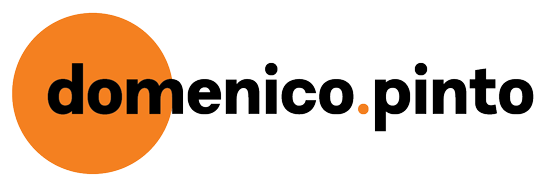
6 Areas to Consider to Hire Top Talent
*This article was originally published on great-shift.com
Why Should I Work for You? 6 Areas to Consider to Hire Top Talent
Even in the current crisis, the War for Talent continues.
The workforce is increasingly demanding and not willing to settle in just any organization.
There has been a paradigm shift, so I invite you to answer this question with me: why are many organizations having trouble recruiting?
Whilst in the past, employees were willing to compromise on work-life balance, accepting long commutes, constant relocations, and spending long days at the office overworking, which no longer holds.
Previously known as the malcontent and unstable, the trailblazers of Generation X, the followers of Gen Y, and now the even more innovative Gen Z have increasingly disrupted the way we work.
Our generation of workers is not moved by economic growth, climbing up the career ladder, or even the threat of job loss.
Particularly after the COVID pandemic, people started questioning themselves about the real meaning of work and what truly fulfills them at the workplace. And the answers to these questions are the key to attracting and retaining talented workers in your organization today:
- Competitive and fair salary
- Company history and employee engagement
- Company values
- Job location
- Working hours
- Benefits
So when a potential employee asks you why they should choose your organization, these are some of the aspects that might kindle a spark in their eyes.
Competitive and fair salary
Most employers put great emphasis on this one aspect: pay.
While salaries are still important, they have become just a qualifier.
When you reach your average salary, any dollar above that is less important, and the higher it goes, the less it impacts the talents’ decision. At the end of the day, it’s not about paying top dollars here but about offering a fair salary that complements other company elements and benefits.
And what is a fair salary? It’s a competitive salary for the market.
If you picture a job seeker having to choose between two companies with similar positions in the market, culture, and benefits, this person will choose the higher-paying bid. Or even someone currently employed that receives a better offer to change jobs. The chances of losing talent increase when the pay is not up to market trends.
Now, let’s imagine the higher-paying company has a less attractive company culture and benefits than the company offering a lower pay. If it, for example, offers the job seeker less flexibility, autonomy, and opportunities for growth, the job seeker is much more likely to choose culture over money. Especially in current times where talent is actively job-hunting for human-centric organizations.
When attracting talent, it is also essential to value your existing workforce. It’s an honest practice to ensure that new hires do not outearn existing talent with a similar job type, skill level, and years of experience. This could disrupt the culture and lead to lower motivation and engagement. If the employee’s performance then proves adequate, rises are rightfully justified.
Fair and equal remuneration is a crucial part of company ethics.
Company history and employee engagement
So, what else are people valuing the most these days?
I’d have to include here company history.
Why? It speaks to the job’s stability and the company’s stability, especially in economic crisis circumstances like the one we are now experiencing.
This makes it even more relevant to promote and prove to the employees that they will be able to stay in the organization for a long time or as long as they wish. You want to indicate that you’re a stable company, that you’re growing, innovating, and have a competitive market share that guarantees the sustainability of the business. Low employee turnover is something that you’d like to aim for.
And whereas the need and demand for stability vary according to the seniority and the lifestyle of the employee, job security always attracts more committed and engaged employees.
Company values
Culture is becoming more and more important for the workforce. People have become much more selective.
The more recent generation of workers are more attracted to companies that align with their values and are less likely to take a job that doesn’t resonate with their purpose, regardless of the position offered or package. This is effectively a big shift; whilst salary is important, there is a larger portion of the workforce that is no longer ready to compromise on these aspects.
A one-size-fits-all type of organization has double the trouble in motivating and engaging everyone, and those who are wishy-washy about their mission, vision, and values soon lose the commitment of their people.
And just like when you establish the persona for your product or service, it’s become relevant to establish personas for your organization. What is its character? How are its relationships? How does it respond and contribute to the outside world?
This helps determine the work environment, as well as the type of people you want to work with. The key word here is synchrony, another aspect of a human-centric organization where the whole organizational system and culture resembles that of a community.
From then on, building up the values that influence the work environment and determining how you interact with all stakeholders is an easier task.
Overall, questions about culture have always been asked during the interview processes, but what the workers are craving now is to see how that translates into practice.
As a result, professionals are no longer asking questions like: “What are your Values?” but rather: “You mentioned Trust is a key value. Can you share with me an example of how that translates into practice?”. Employees are tired of seeing nice company culture brochures and posters on the walls, they are hunting for “the real thing”!
Job location
Whereas in the past major cities were the optimal office location option, nowadays, it varies according to employee lifestyle and preferences.
And this is where you need to know your target market.
If you’re recruiting or retaining people that are in the life stage of having a family, the best job location for them is more likely to be a safe environment with less population density, good access to good education, and all sorts of infrastructures that support the growing family.
If you’re looking at attracting a younger crowd or a more social crowd, the demand here is more likely to be for good access to all sorts of amenities such as workout facilities, sports activities, eateries, nightlife, and adequate housing options.
If you’re trying to attract more impact-oriented people, it’s important to select a place with clean air and plenty of options to engage with nature and make a positive change in the community they are a part of.
Additionally, over the last years, people have been getting more and more used to working from home, and research indicates that 9 out of 10 employees want flexibility in where and when they work and that 54% of employees are likely to quit if they aren’t offered the flexibility they want. This means fully office-based work only gives you access to less than half of the talent pool. A larger number of organizations now offer hybrid work options to allow their employees to have some flexibility and, at the same time, have regular check-ins in the office and with their teams.
The Work From Anywhere (WFA) job policy is also on the rise. People in their early and mid-twenties, career changers, and independent workers are very open to traveling (digital nomadism) and even living in different countries. This means they are looking for flexible work models. The organizations that adopt such policies often organize company retreats and virtual events to create team bonding and collaboration, help build trust and improve communication.
Working hours
Working hours equals more or less flexibility for employees: will they be able to work and structure their days or follow a strict schedule? Do they have to work on weekends and not do activities with their families? Do they have to work long days?
One big trend to be aware of here is that more and more companies are experimenting with shorter work hours: from 40h/week to 35-30/hours a week and even 4-day workweeks. And these are the ones that are still tracking hours. Some organizations are going completely away from the concept of hours overall. Instead, they focus on the output rather than on the number of hours working.
This aspect is particularly important when it comes to work-life integration. The more flexibility you give your people to set their own work schedules, the more attractive the organization becomes. And while this can’t usually be done in every industry and trade, there’s always room for innovation and improvement of your people’s work-life balance.
Benefits
What are some of the benefits we’re talking about? The more standard and common benefits offered by organizations are health insurance, sick and medical leave, paid time off or holidays, career planning and progression, and educational assistance and training.
But nowadays, with the workforce increasingly valuing work-life balance and integration, progressive and human-centric organizations have started offering a new set of benefits to attract and retain their talent.
The rising trends include:
- unlimited holidays
- work-from-home days (hybrid work models)
- work-from-anywhere days (fully remote or office-based companies that allow for up to three months of traveling and working from abroad)
- flexible working hours
- asynchronous work
- company retreats
- mental health days and assistance
- wellness perks
- volunteer time off
- no overtime
The more the organization shows that it truly cares about the happiness and well-being of its employees, the more creative and comprehensive the benefits, and the more likely it is to increase its competitive advantage.
No, you don’t have to master all the aspects mentioned in the article to be in the market; there are plenty of average workers looking for jobs every day and considering modest bonuses and perks.
If you’re not able to offer a certain perk like, let’s say, working from home or flexibility then you should be able to compensate your people in another way. Maybe you need to offer a salary structure even higher than the market rate and team retreats and training to compensate for that. And if you don’t have the financial capability to do so, consider other benefits, be inventive, and ask your workforce what they want and, more importantly, what they need – in other words, what motivates them to get up in the morning and work for you.
However, to hold and attract top performers to your company, you should step up. At the end of the day, this is like a point system: organizations that tick off the most items from these lists increase their chances of getting and retaining the best talent out there.
Keeping up to date with current trends means you become less vulnerable and more competitive. HR work here is essential: to track your numbers (such as employee churn and lifetime, number of applications received for a position), assess your employee satisfaction rates, and understand where you can still improve.
As mentioned in the B4P – On People article, the whole employee experience, from recruitment to career progression and exit interviews, should be seamless. And just like in a Tetris game, you need to piece together the employee package in a way that fits both you and the workforce.
The live-for-work mindset is dying, and the work-to-live mentality is on the rise. Work-life balance and integration are a must.
Working for profit-oriented companies does not motivate people. A strong purpose and mission are needed to help engage the workforce.
Organizations are groups of people that intentionally assemble to serve a purpose that is achieved through a set of planned objectives.




